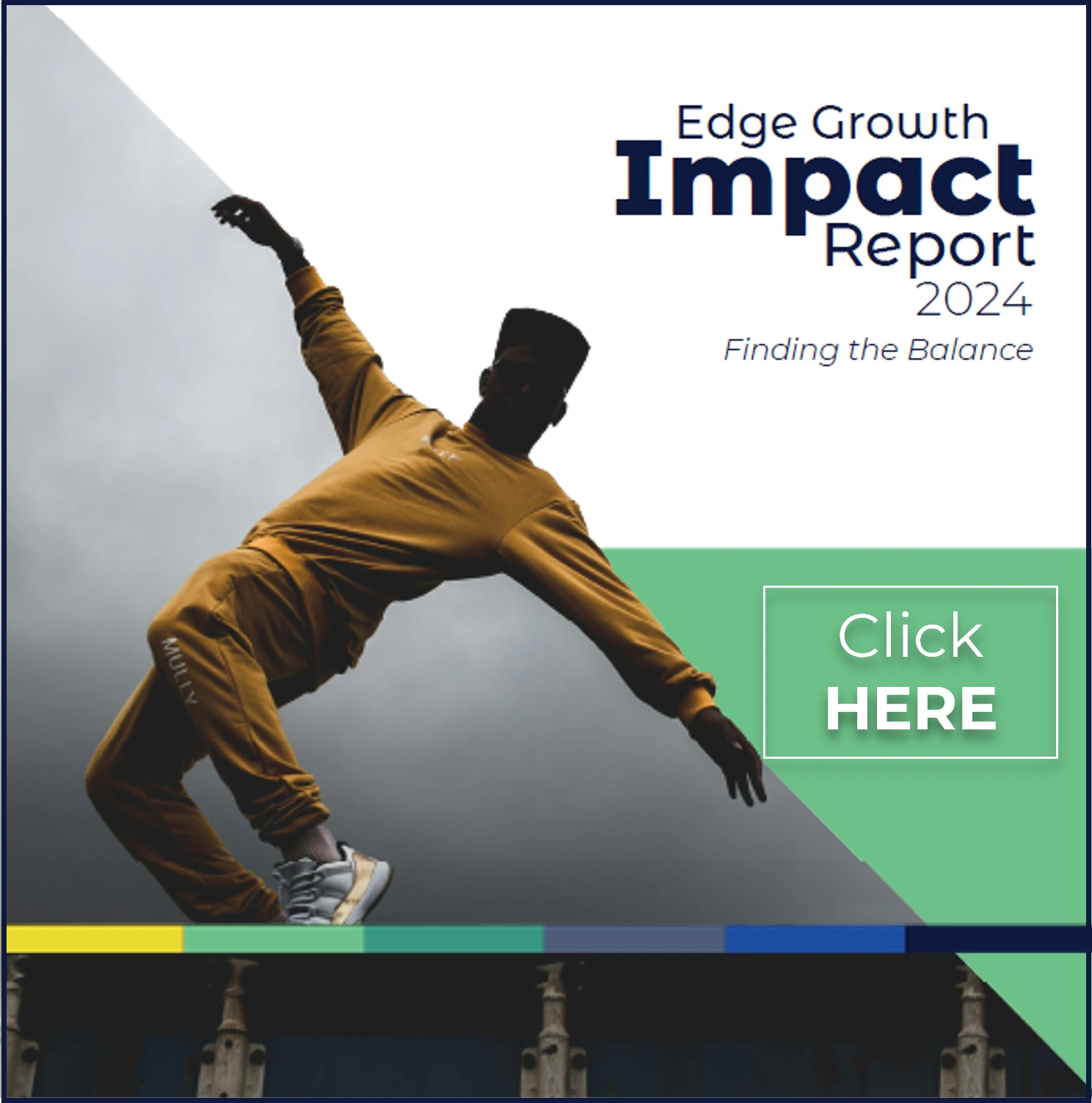Empowering SMEs towards Investment-readiness
For small businesses, securing funding is an essential milestone towards establishing a solid foundation for long-term growth and sustainability. Funding enables businesses to gain more customers, develop new products, expand production capacity and access untapped markets.
Active stakeholders in the entrepreneurship ecosystem are cognisant of the importance of making funding accessible to early-stage businesses to enable sustainable growth. However, when we speak about breaking the barriers to funding, we often evaluate it from the supply side. Are we making enough capital available? Are we providing enough diversified financing options? How can we remove the red tape and improve ease and accessibility? While these are important issues for which innovative solutions are required, what is absent from the conversation are the challenges we face on the demand side. Most notably, the investment-readiness of early-stage businesses.
There is a strengthening recognition within the entrepreneurship ecosystem of the need for initiatives that can progress early-stage businesses to the point of investment-readiness. This requires interventions that advance beyond the provision of funding. It requires investment-readiness initiatives that can walk the path with entrepreneurs to help them establish businesses that are attractive to investors. Here we explore 3 crucial considerations for creating investable businesses and assessing their investment potential with the help and support of investors and venture builders.
The Proof is in the Product
Investor and Vumela Fund trustee Mike Sage believes that the best investment success stories lie in the product offering. When considering the investment potential of early-stage businesses, investors should assess the uniqueness and value of the product or service on offer (in other words, a unique value proposition) and look for businesses that solve a significant problem or provide a compelling solution that differentiates them from competitors.
Producing a Winning Product
There is no shortage of investors with a strong desire to invest in innovative products and services that solve a problem. Amina Patterson, startup strategist and founder of Solve4x, notes that increasing investments in early-stage businesses are indicative of a growing appetite to invest in innovative solutions. Amina asserts that developing a viable product or service means “solving for a problem that people have and are willing to pay you to solve. Where innovation comes in is how you solve that problem.”
Murendeni Mafumo the founder of Kusini Water agrees. “The best way to grow a business is to build a good product. Build the best product you can build and find people who believe in the product and are willing to pay for it”. Kusini Water’s own investment success story is proof of the statement. Murendeni, a water scientist, recognised that many communities in South Africa don’t have access to safe and clean drinking water. Murendeni established Kusini Water to build water filtration systems through a patented process that uses nanotechnology and macadamia nut shells. Kusini Water has since secured an investment from the Edge Growth-managed Vumela Fund.
Proving Product-Market Fit
When assessing the investment potential of an early-stage business, the business should be able to prove that the product or service has market demand. Amina warns against investing in products that haven’t been validated by customers or stakeholders. “There are so many entrepreneurs that have sunk millions into building a product that no one wants and no one is going to use”. Amina explains that customer validation is essential and that products need to be validated by real-world customer data.
In the early stages of his business, Murendeni says that much of the initial funding he acquired went back into developing the products that proved product-market fit. “When you take that product to the market, the market reacts. People will buy the product if it’s good enough”. Murendeni explains that when people start purchasing a product, it is easier to attract investment because it demonstrates the desirability of the product on the market.
Investment-readiness initiatives can ready small businesses for investment by helping entrepreneurs test the validity and desirability of their product or service on the market. This can be achieved through market research, customer surveys, testimonials, or successful pilot programmes. Investors and venture builders should assess whether there is a real need for the offering and whether customers are willing to pay for it.
The Proof is in the Plan
An OECD study conducted on angel investors based in the UK revealed how small businesses fall short of attracting investment. The business angels cited the following prevalent flaws as the reasons to reject an investment: a shortage of comprehensive and credible market information, a lack of a unique selling point, unrealistic assumptions and flawed financial projections. Often entrepreneurs fail to understand and meet the specific needs and expectations of investors. This lack of understanding is evident in the business plan.
Investment-readiness initiatives can help entrepreneurs build solid business plans that encompass the following:
Demonstrate Business Viability
Once the business has a product with proven market potential, the key is to capture this within the business plan with the inclusion of data or findings that prove the viability of the product. The plan should clearly articulate the business model, competitive advantage or unique value proposition, and market potential.
Master the Numbers
Investment-readiness initiatives can help entrepreneurs learn the importance of sound financial management in attracting investors by developing their understanding of how to develop accurate financial statements, manage cash flow effectively, demonstrate a clear path to profitability and implement robust accounting systems and practices to inspire investor confidence. A business plan should articulate financial factors such as revenue, profitability, cash flow, and financial projections as well as the capital requirements and funding needs of the business.
Chart a Path to Growth
A well-defined business plan should outline short-term objectives and long-term vision and showcase a compelling growth strategy that illustrates scalability and aligns with market trends. Additionally, it should demonstrate a deep understanding of the competitive landscape and a solid go-to-market strategy. Investors seek businesses with the potential for high growth. They want to see that the business can expand its operations, reach a larger customer base, and generate substantial returns on investment.
Showcase Social Responsibility
Investors increasingly value businesses with a purpose beyond profit. Mike Sage suggests that early-stage businesses that can demonstrate an environmental or social impact have an advantage in attracting investment. Where applicable, entrepreneurs should showcase environmentally conscious initiatives, social impact, job creation and community engagement.
Captivate with a Compelling Story
Amina believes that a key characteristic of entrepreneurs is “their ability to articulate their product in a way that other people can understand simply” and who can “sell their vision to investors”. The key is to bring all the moving parts of the plan together in such a way that it presents a concise, compelling, and captivating story to investors. “If you have the story concisely put together, then I think you’ve got a good chance of attracting the forms of capital that you need”, says Mike.
The Proof is in the People
The power of people is not to be underestimated when assessing the investment potential of early-stage businesses. Investors place significant importance on the team’s ability to execute the business plan and assess the experience, expertise and track record of the management team. Entrepreneurs should surround themselves with a capable and experienced team, highlight the skills and expertise of their key team members and emphasize their relevant industry experience.
Additionally, early-stage businesses can highlight their ability to attract and retain top talent by including a comprehensive human resources strategy that includes talent acquisition, training and development programmes, and employee engagement initiatives in the business plan.
For more insights on investing in tech entrepreneurship, listen to Amina Patterson on Episode 7 of The Cutting Edge podcast: Accelerating Tech Entrepreneurship and Innovation in South Africa
Listen to Mike Sage and Murendeni Mafumo on Episode 4 of The Cutting Edge podcast: Lifting the Barriers to SME Funding, to learn more about SME funding.



